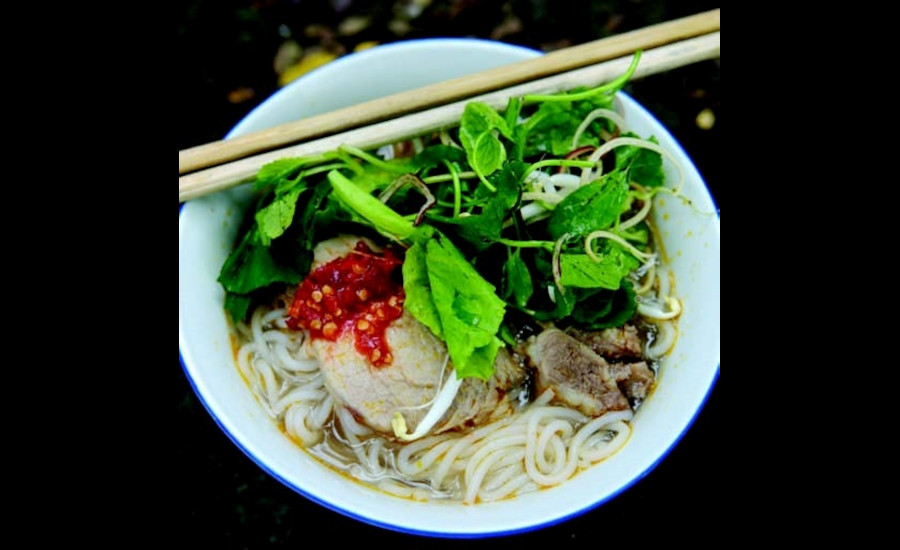[ad_1]

The rise of consumer interest in—and craving for—global culinary flavors continues to be strong. And, in a world of cuisines to entice the Western consumer, few are as popular as the foods of Southeast Asia. With sauces, concentrates and extracts at the heart of many cuisine traditions, several stand out when it comes to traditional Asian foods.
To define some core trends in Asian and Asian -inspired sauces and ingredients, Prepared Foods turned to regular contributor and research chef Robert Danhi. Danhi, the award-winning author of “Southeast Asian Flavors” (Mortar & Press, 2008) and host of the TV show Taste of Vietnam, is one of the leading experts on Asian cuisine, and as a “curator of cultures,” he leverages his deep knowledge and passion as a consultant to food service operators, CPG companies, commodity boards, and educational organizations.
The opening up of these rich culinary cultures in this part of Asia has allowed for an expansion of some unique Asian flavorings that are either just emerging or should be used in prepared foods. “Asia has 48 plus countries [with] thousands of ingredients, and thousands of years of history,” Danhi conveys.
One of the key flavor in many Southeast Asian formulations is fermented fish sauce, called nước mắm in Vietnam and nam pla in Thailand. “Nước mắm is definitely one of those foundational ingredients,” affirms Danhi. “People think of fish sauce and they think of the iconic fish sauce of Vietnam that’s exported.
On the go? Listen to the podcast now!
Listen to more episodes from The Prepared Foods Podcast.
Something that is changing in this fundamental flavor source is that there is not just one fish sauce. There are as many varieties as there are regions and cultures in each country. Not only do the recipes vary but also so do the types of fish used. Of course, the basics are the same: fish are salted and stacked and fermented, sometimes in wooden barrels, sometimes in more modern containers. Moreover, different amounts of salt, different fermentation times, and other details add further variation to the final flavor profile.
“The fermentation involves the enzymatic breakdown of protein with the release of free glutamates and nucleotides,” says Danhi. As an example, Danhi notes that with Vietnamese fish sauce, in the north one of the common versions of fish sauce is richer, darker, and stronger—more intense.
While fish sauce is typically a liquid, there also are fish sauce powders—concentrated versions that, like soy sauce powders can come in a variety of strengths. They can be employed to contribute deep umami notes across multiple savory formulations, from sauces and soups to dips and dressings.
Another concentrated flavor source in Asian cuisine is the humble egg. Mildly fermented and salted or brined, egg yolks—in paste or powdered form—is a common ingredient that adds flavor depth as well as texture. This common ingredient in China and elsewhere in Asia (often from duck eggs) has increasingly found its way into traditional cooking styles here in North America.
Broths and stocks are another ingredient enjoying an upward trend, benefiting from the popularity of bone broth and Asian soups, such as Vietnamese phô. Infusing broths and stocks with Chinese licorice (Glycyrrhiza uralensis) called cam thӑo in Vietnam, has made welcome inroads into the US of late. Similar to star anise, it also contributes an aromatic warmth to soups, but also is showing up in Chinese tonics and even cocktails that are becoming popular among consumers seeking foods with added health benefits.
Similar botanical flavor sources gaining traction are pandan leaf (Pandanus amaryllifolius), makrut (a.k.a. kaffir) limes (Citrus hystrix), and galangal (Kaempferia galanga). These highly aromatic plants have such unique flavor and fragrance profiles their use has almost become a hallmark of authenticity in a Southeast Asian preparation. To find out more about all of these important ingredients, sauces, and concentrates, Prepared Foods recently interviewed Chef Danhi. To see the video of that interview, click here, or listen to the audiocast here.
Source link

Emil Kovács graduated from the Journalism program at Eötvös Loránd University in Hungary. During his journalism studies, he focused on data journalism, investigative reporting, and multimedia storytelling. He gained experience by writing for the university’s student newspaper, where he gained attention for his articles on social issues. After graduation, Emil began working as a reporter at a European news agency, where he conducts in-depth analyses of international news and current events.


